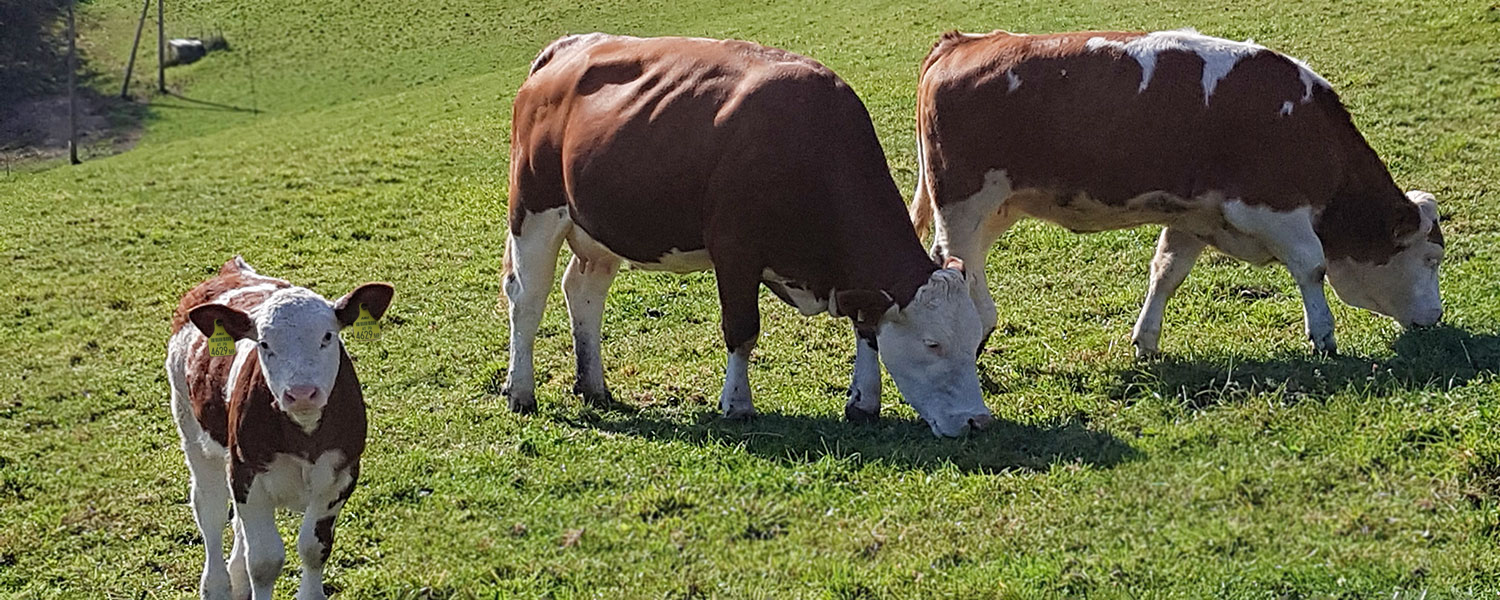Suckler cow husbandry with a site-adapted stocking density is a climate-friendly form of grassland management that enables species-appropriate livestock husbandry, improves soil fertility, avoids erosion, protects biodiversity, keeps the cultural landscape open and maintained, secures jobs in structurally weak areas and makes a valuable contribution to food security. 71 percent of the world’s agricultural land is grassland.
The advantages
- Keeping the cultural landscape open
- In connection with grazing, generally a species-appropriate form of cattle husbandry
- Improvement of soil fertility
- Good social acceptance
- Preservation of jobs in structurally weak regions
- Production of valuable foodstuffs
In addition, extensive grasslands in particular make a valuable contribution to the preservation of biodiversity in flora and fauna.
The key data
71 percent of the earth’s surface is covered by water and 29 percent by land mass.
The 29 percent land mass corresponds to approx. 13.4 billion hectares, of which approx. 5 billion hectares are agricultural land. he 5 billion hectares of agricultural land are divided into about 3.55 billion hectares of grassland and about 1.45 billion hectares of arable land.
The 3.55 billion hectares of meadows and pastures are of great importance in terms of climate protection and as a source of food and habitat for ruminants. Through the use of ruminants, the biomass growing on the meadows and pastures becomes available for human nutrition.
In Austria, 44 % of the agriculturally used area is arable land (1.39 million ha) and 54 % (1.73 million ha) is grassland, which is divided into economic grassland (0.87 million ha) and extensive grassland (0.86 million ha).
The impact
Together with forests, grasslands are of enormous importance for climate protection. Due to their ability to build up higher humus contents, grassland areas can store large amounts of carbon dioxide.
Due to their high humus content, meadows and pastures store about twice as much carbon per hectare as arable soils. (LINDENTHAL 2020)
In addition, grassland significantly reduces the risk of erosion and thus the loss of valuable humus and nutrients. Through higher humus contents, grassland soils also contribute somewhat to indirect flood protection.
Soil fertility
In the longer term, the site-appropriate management of grassland leads to an improvement in soil fertility and to the maintenance of an open cultural landscape.
Today, the prairies of North America, the pampas of South America and the steppes of Ukraine are among the world’s most productive soils. These largest granaries of the world owe their legendary fertility primarily to the co-evolution between grazing animals and grasses. The importance of grazing animals for the non-crop soils is even greater: whether Mongolian steppe or African savannah – it is the gigantic extent of the area that makes the grazing of these endless expanses so crucial for human nutrition – and for the climate – despite widespread aridity! (IDEL 2019)
Bibliography:
IDEL A. 2019: „Die Kuh ist kein Klimakiller! Wie die Agrarindustrie die Erde verwüstet und was wir dagegen tun können“
Metropolis-Verlag, Marburg 2019
LINDENTHAL T. 2020: „Um das Klima zu schützen, sollte Grünland Grünland bleiben.
Der fortschrittliche Landwirt 1. November 2020 Nr. 21, Seite 26 – 27



